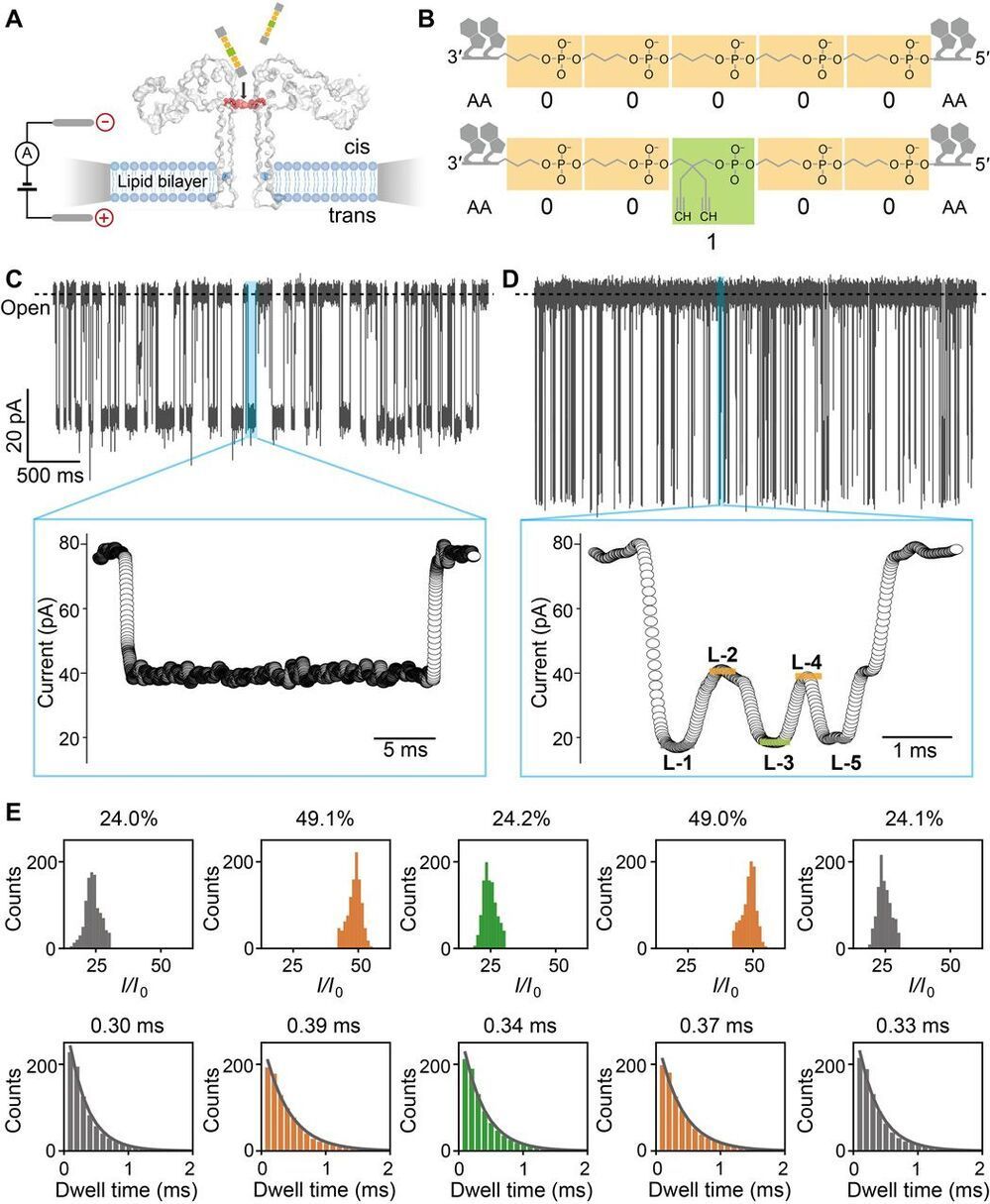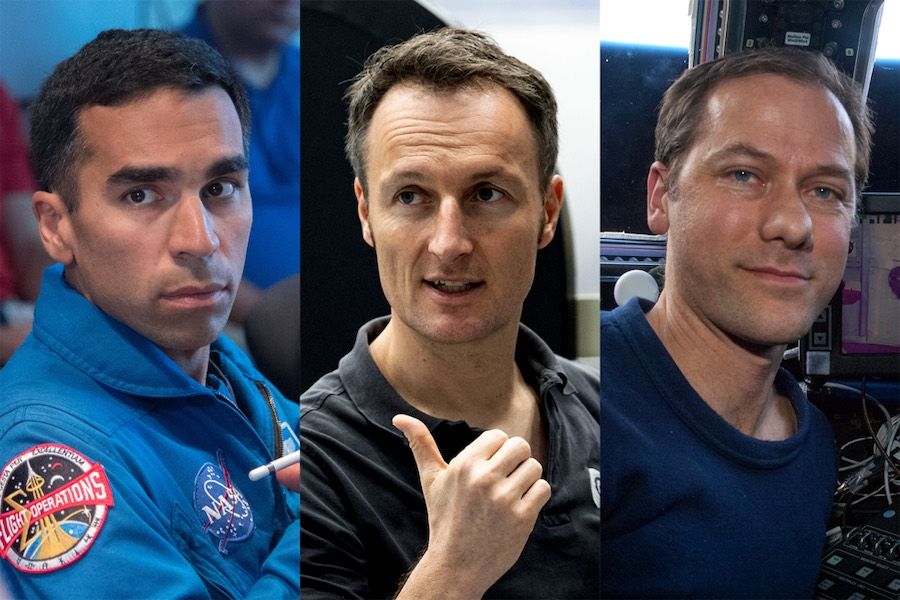Sub-Saharan Africa can have high-speed internet access without needing to lay any cables.



Experts first floated immunity passports as something to give people who had recovered from COVID-19, but the idea was laden with ethical and logistical concerns — especially since scientists weren’t sure how long coronavirus antibodies lasted after a patient recovered.
But instead of the immune system’s response to COVID-19, this new system built by the medical testing platform startup Healthvana would show whether someone had been vaccinated, likely a more robust indicator that they’re no longer infectious.
After vaccination, you’d be able to take out your smartphone and show you’d been inoculated “to prove to airlines, to prove to schools, to prove to whoever needs it,” Healthvana CEO Ramin Bastani told Bloomberg.

Digital data storage is a growing need for our society and finding alternative solutions than those based on silicon or magnetic tapes is a challenge in the era of “big data.” The recent development of polymers that can store information at the molecular level has opened up new opportunities for ultrahigh density data storage, long-term archival, anticounterfeiting systems, and molecular cryptography. However, synthetic informational polymers are so far only deciphered by tandem mass spectrometry. In comparison, nanopore technology can be faster, cheaper, nondestructive and provide detection at the single-molecule level; moreover, it can be massively parallelized and miniaturized in portable devices. Here, we demonstrate the ability of engineered aerolysin nanopores to accurately read, with single-bit resolution, the digital information encoded in tailored informational polymers alone and in mixed samples, without compromising information density. These findings open promising possibilities to develop writing-reading technologies to process digital data using a biological-inspired platform.
DNA has evolved to store genetic information in living systems; therefore, it was naturally proposed to be similarly used as a support for data storage (1–3), given its high-information density and long-term storage with respect to existing technologies based on silicon and magnetic tapes. Alternatively, synthetic informational polymers have also been described (5–9) as a promising approach allowing digital storage. In these polymers, information is stored in a controlled monomer sequence, a strategy that is also used by nature in genetic material. In both cases, single-molecule data writing is achieved mainly by stepwise chemical synthesis (3, 10, 11), although enzymatic approaches have also been reported (12). While most of the progress in this area has been made with DNA, which was an obvious starting choice, the molecular structure of DNA is set by biological function, and therefore, there is little space for optimization and innovation.

Matthew W., a nurse at two different local hospitals, said in a Facebook post on December 18 that he had received the Pfizer vaccine, telling the ABC News affiliate that his arm was sore for a day but that he had suffered no other side-effects. Six days later on Christmas Eve, he became sick after working a shift in the COVID-19 unit, the report added. He got the chills and later came down with muscle aches and fatigue. He went to a drive-up hospital testing site and tested positive for COVID-19 the day after Christmas, the report said.
Healthcare & Pharma.
In the not so distant future you could be making money from home by controlling robots, robots that are in another country. Or there will be products, such as a self driving Tesla car, that can go out and earn money on their own.
This video takes a look at the futuristic ways people will be earning money. From telepresence jobs and future business ideas, to new space businesses, and even how people will be storing their money — moving away from cash and credit cards to using chips that are in their bodies.
Elon Musk’s Book Recommendations + Others (Affiliate Links)
• The Hitchhikers Guide to the Galaxy: https://amzn.to/3kNFSyW
• Ignition: https://amzn.to/3i20BgN
• Benjamin Franklin: https://amzn.to/2G24eWX
• Structures: Or Why Things Don’t Fall Down https://amzn.to/36KGCRc.
• The Foundation: https://amzn.to/3i753dU
• Six Easy Pieces (Thinking Behind Physics): https://amzn.to/3mUvIP2
Video Links Mentioned in the Video.
• Elon Musk: The Scientist Behind the CEO
• Robots Cooking: The Restaurant of the Future.
https://youtu.be/zCaDJOGnkuo.
• Space Inc: The New Space Businesses and Tech.
Are you fed up with all the negativity?
Between Tesla, SpaceX (Starship & Starlink), 5G, mRNA vaccines and more, 2020 has been an eventful year full of breakthroughs all set to make our lives better, and ushering in a sci-fi future quicker than ever…so I brought them all together in one video to celebrate the great people working tirelessly to make our future better.
If you want a feel good boost, why not drop by and spend a few mins revelling in the positive stories of 2020.
Have an awesome New Year!!
In Looking Back At 2020 I want to review the year to show that for all the bad, there was still some amazing good and positive stories that refused to take a back seat.

Like.
Rookie NASA astronaut Raja Chari — a former U.S. Air Force fighter pilot — veteran physician-astronaut Tom Marshburn, and European Space Agency astronaut Matthias Maurer have been assigned to fly to the International Space Station on a SpaceX Crew Dragon spaceship in the fall of 2021.
A fourth crew member will be added to the mission at a later date, following a review by NASA and its international partners, the U.S. space agency said in a Dec. 14 announcement.
Chari, Marshburn, Maurer, and the fourth crew member will launch on the third operational flight of a SpaceX Crew Dragon capsule to the International Space Station. The mission, designated Crew-3, will launch in the fall of 2021 from the Kennedy Space Center in Florida on a SpaceX Falcon 9 rocket and last into the spring of 2022.

The Kavli Institute for the Physics and Mathematics of the Universe (Kavli IPMU) is home to many interdisciplinary projects which benefit from the synergy of a wide range of expertise available at the institute. One such project is the study of black holes that could have formed in the early universe, before stars and galaxies were born.
Such primordial black holes (PBHs) could account for all or part of dark matter, be responsible for some of the observed gravitational waves signals, and seed supermassive black holes found in the center of our Galaxy and other galaxies. They could also play a role in the synthesis of heavy elements when they collide with neutron stars and destroy them, releasing neutron-rich material.
In particular, there is an exciting possibility that the mysterious dark matter, which accounts for most of the matter in the universe, is composed of primordial black holes. The 2020 Nobel Prize in physics was awarded to a theorist, Roger Penrose, and two astronomers, Reinhard Genzel and Andrea Ghez, for their discoveries that confirmed the existence of black holes. Since black holes are known to exist in nature, they make a very appealing candidate for dark matter.

En un video, Boston Dynamics presumió el avance que ha alcanzado con sus robots al ejecutar tareas, antes limitadas a los humanos.